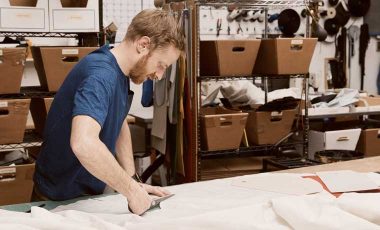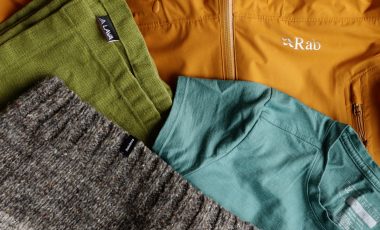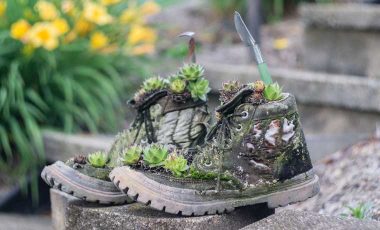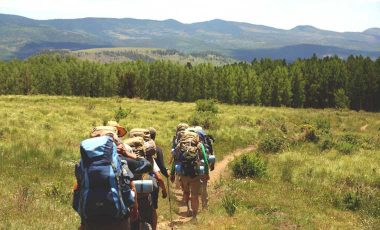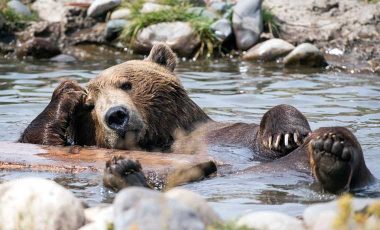As with every new year, 2019 saw a ton of new outdoor gear and clothing hit the market. This is nothing new. However, what is new, is the number of brands offering products that are created using more eco-friendly and sustainable processes, fabrics and materials. Products made from recycled polyester and nylon, organic cotton and hemp are becoming the norm. There is no denying that this is a majorly positive step towards a more sustainable industry. But, things aren’t always as cut and dry as they may seem, and although recycled fabrics are better than the alternative, the recycling process also places a huge strain on the environment. So, should we be striving to decrease our impact further?
When researching eco-friendly backpacks recently, I came across Truce Designs. This Portland-based company creates backpacks and bags out of upcycled materials such as old sailcloths and drysuit fabric. I got chatting to Luke Mathers, the founder of Truce Designs, about what sustainability really means, and some of the underlying issues surrounding the move towards recycled plastic fabric.
Below, Luke shares information on ‘eco-friendly’ and ‘sustainable’ processes…
Truce Designs on recycling vs upcycling
By Luke Mathers
I am not a chemist or textile designer – for this piece I rely on the research and expertise of others more well versed on the subject. I am, however, always curious about ‘how it’s made’ so topics like these fascinate me.
In this article I want to talk about the differences between ‘upcycling’ materials, and using recycled PET and other plastic fibers to create new products.
The apparel and accessory industry creates 21 billion pounds of waste annually. Truce Designs try to take a small bite out of this number by taking unused (but still very usable) materials from drysuit factories and buying excess fabric rolls from their warehouses. This way, we’re not ordering as much virgin material to make our bags – but buckles, zippers and trim are much harder to source from ‘upcycled’ sources.
The larger a company is, the larger their environmental impact is – it’s an inevitable truth. Scaling up a sustainable business model like Truce’s is hugely complicated and nearly impossible to achieve without compromising standards in some way. This is where respected accreditation services like Bluesign® and Cradle to Cradle Certified™ can be used as guides to the companies working hard towards sustainability.
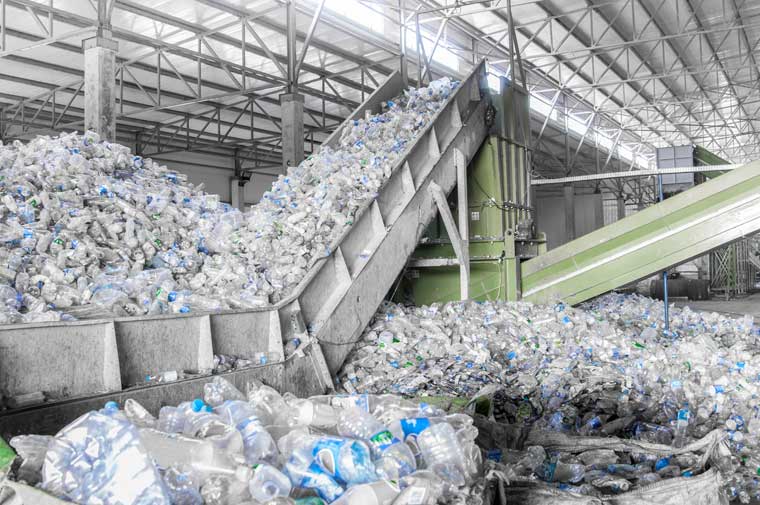
Recycling plastic into yarn
While the difference between ‘upcycled’ and ‘recycled’ may seem nuanced and the terms can be seen to be used interchangeably, it’s an entirely different process. For this example we look at recycled PET (Polyethylene Terephthalate) material – used to make plastic water bottles.
In 2015, the recycling rate for PET was just under 30%*, but it’s safe to assume that figure has gone down since China’s ban on US shipments of recyclable waste.
The process
In an ideal scenario, that plastic water bottle actually makes it to a recycling center – at which point, the plastic bottle is:
- Sterilized and dried
- Crushed into small chips
- Heated to pass through a spinneret machine which turns it into a yarn
- The yarn is then wound, crimped, baled, dyed, and knitted into a new roll of fabric
These last processes are an important step which involve dyeing the fabric, as well as coating and finishing. These chemically intensive tasks result in factory effluents which can be environmentally damaging, so it’s important to have standards. This is the biggest strength of Bluesign® and other accreditation bodies.

The impact
Each and every single step in this process involves massive energy use and a real human cost.
Nevertheless, it has advantages over using virgin petroleum products to make new Polyester or Nylon, and any advance in material recycling is a good thing. Current practices, however, are still far from perfect.
The massive amount of water, energy, and human labor involved in this production process should not be taken lightly. It’s a dirty, time consuming process that creates waste and exposes lowly paid workers to hazardous conditions. Plus, raw materials and finished products are shipped back and forth across the Pacific Ocean in tanker ships burning ‘bunker’, the dirtiest type of petroleum fuel.
Additionally, PET was never designed to be close to human skin and our sweat – its fibers include UV stabilizers and dioxins which have questionable effects on living organisms.**
Upcycling existing fabrics
At Truce Designs, we collect old sails used for years on the water so they are no longer stiff and crinkly. We cut off the hardware, wash the pieces we cut from the sail with soap, let them dry, and make your backpack. The original manufacturing process of those sails can be quite a toxic affair, so it’s important to re-purpose them as much as possible and keep them from landfill or incineration.
Of course, we still end up with some waste. We cut around obvious imperfections and toss any pieces of material that are questionable to retain high quality. We also buy new zippers, buckles and webbing as these items are much harder to find ‘upcycled’.
Another major advantage for us is our policy to make bags when they are ordered. Unlike big companies, we don’t order thousands of units to be made at an overseas factory – putting them at risk of ending up with overstock to be heavily discounted or destroyed.
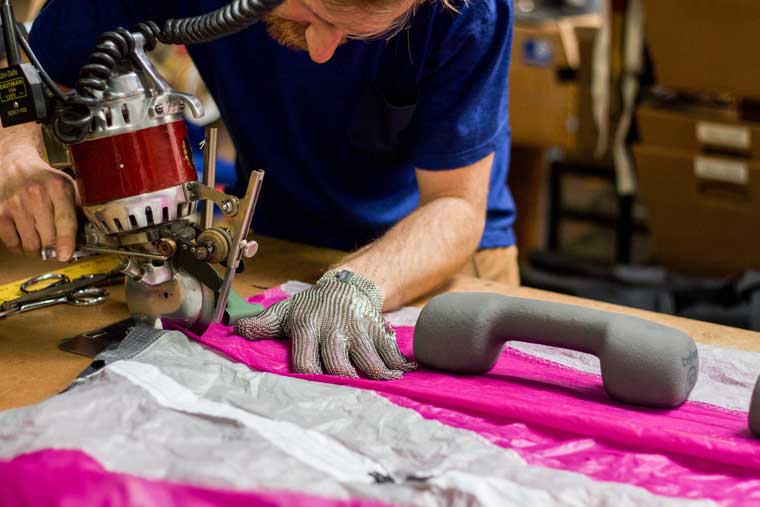
Product lifecycle
Making a product from recycled or upcycled material is great, but it’s not as good of an indicator of sustainability as Product Lifecycle, introduced in the book Cradle to Cradle. Where will all the ingredients end up when the product reaches the end of its usefulness? Product packaging, for example, is a massive source of waste – think of toothpaste tubes, plastic shampoo bottles and detergent containers.
We ship our bags in an uncoated cardboard box. We don’t do catalogs and we don’t include anything else in the box that needs to be discarded. I make each Drop Liner backpack from start to finish here in the shop, and I sign the customer’s name in the back.
Buy it nice, or buy it twice
We’re continually striving to improve our products, but more importantly, reduce our impact on the planet and its current (and future) inhabitants. That involves making our bags to last the long haul – we fully embrace the saying “Buy it nice, or buy it twice.”
We’re in the planning stages of a program to take back bags at the end of their lifecycle to repurpose all possible parts and materials. By offering a discount on a new backpack or duffle bag when trading in a bag that’s no longer usable, we’re hoping we can get customers to consider the product lifecycles of all the items they use daily. Further discounts could be extended to those willing to accept pre-used hardware with scratches or other signs of previous use.
Such a labor intensive program doesn’t promise financial gain, but we believe it’s worth it and are hoping to launch next year.
Savvy consumers might benefit from doing their own research on product lifecycles to question companies’ commitments to sources and methods before making a buying decision.
If interested in further reading on topics of product sustainability, I highly recommend picking up a copy of Cradle to Cradle – it’s a fantastic read.
* EPA – government facts and figures
** Cradle to Cradle – McDonough, Braungart 2002
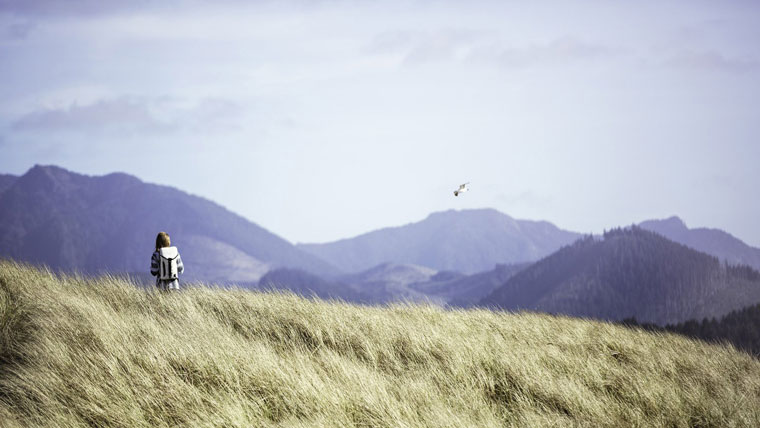
Huge thanks to Luke for enlightening us on such a hugely important matter that will hopefully help us make better decisions as consumers. We hope that the next step in Truce Designs’ journey is a massive success.
Stay up to date with their progress and follow them on Instagram.


